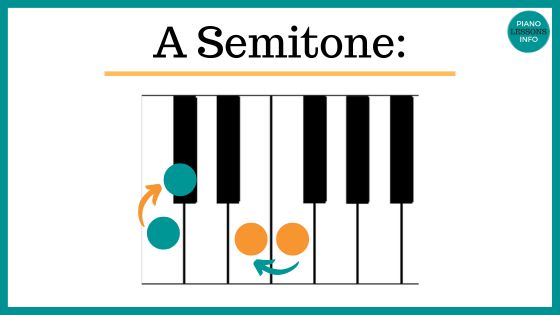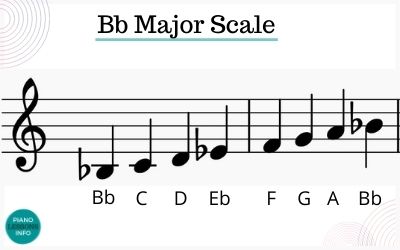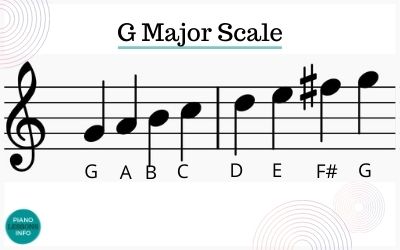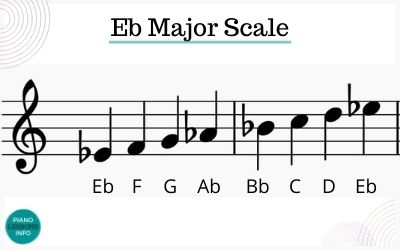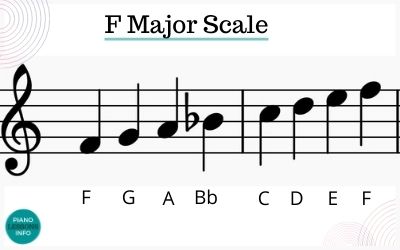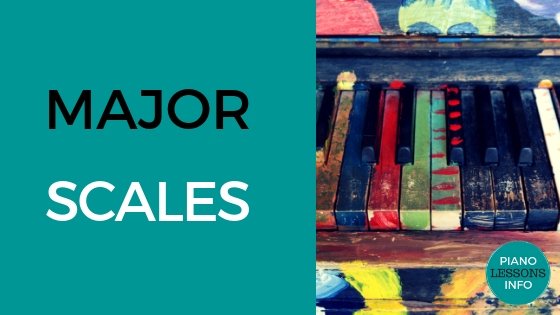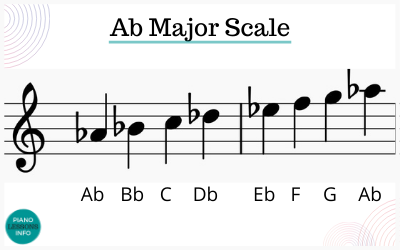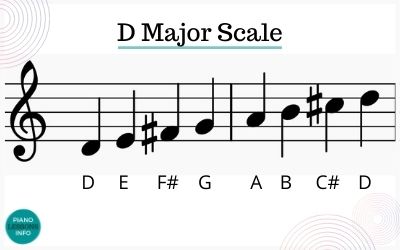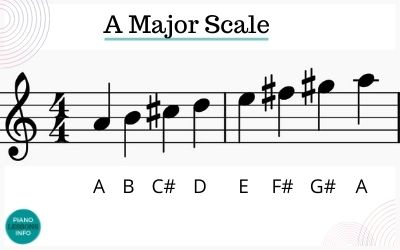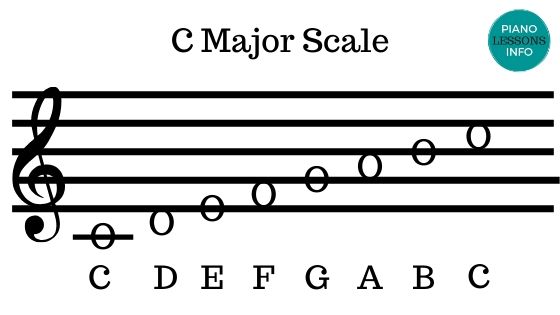C Major Scale on Piano
Notes, Fingering & How To
The C major scale on piano is the first scale almost everybody (probably everyone really) learns. It's a basic and fundamental scale and the only major scale with no sharps and no flats.
On this page we'll go over the notes, fingering (or finger patterns) to use and lay it all out with some nice pictures to go along with it.
Have you heard of my scales challenge? If you want to learn and get better at scales, you can join that here.
C Major Scale - Notes
The C major scale goes from C to C. The notes of the C major scale are C D E F G A B C. (And there are no black notes to play in this scale.)
You can start on any C on the piano, head up (or down) to the next one and have played the C major scale.
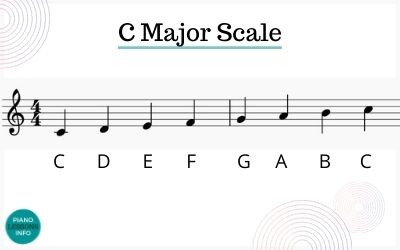
So basically you start on C and end on C but you only have 5 fingers ... so how do you play it? That's next.
C Major Scale Fingering for Piano
The C major scale uses the basic piano fingering that is used for quite a number of different scales. (More on basic scale fingering tutorial here.)
You do need to know your finger numbers to play scales and here's a quick visual:
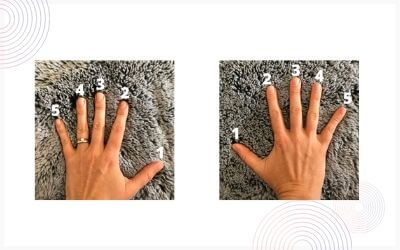
This is the fingering pattern you need to use for the C scale.
Right Hand: 1 2 3 1 2 3 4 5
Left Hand: 5 4 3 2 1 3 2 1
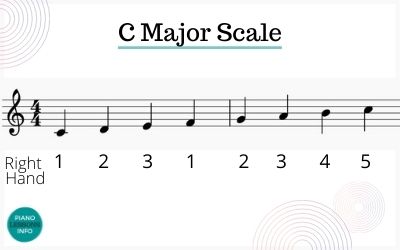
In your right hand when you play this scale, your thumb will cross under finger 3 when going up. (Finger 3 will cross back over when going down.)
In left hand, finger 3 will cross over your thumb when going up. Finger 3 will cross under your thumb when going down.
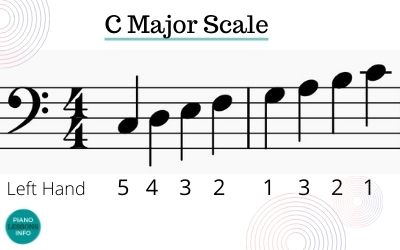
If you want to practice this scale going up (ascending) and then going down (descending - these are the music terms we use), you can use these pictures:
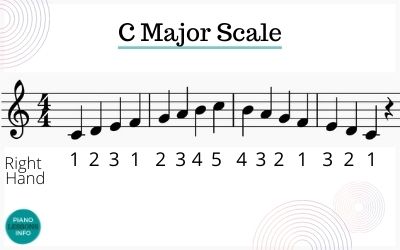
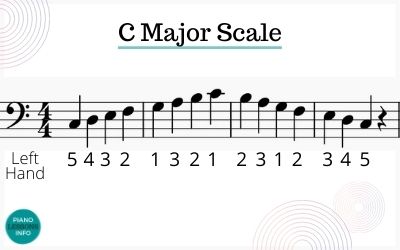
Want all the scale fingering in one place?
Get the Complete Book of Scales, Chords and Arpeggios here on Amazon (this is an affiliate link).
C Major Scale - 2 Octaves
To play the C major scale with 2 octaves, you just keep heading further on in the direction you started (usually up) and get to another C. The fingering will differ slightly.
After you play your first octave, instead of playing finger 5 to end things off, you need to cross your thumb under so you can start your next octave of the scale.
Right Hand 2 Octave Fingering for C Major:
1 2 3 1 2 3 4 1 2 3 1 2 3 4 5
Left Hand 2 Octave Fingering for C Major:
5 4 3 2 1 3 2 1 4 3 2 1 3 2 1
The Key Signature of C Major
Now that you know the C major scale, you also know the key signature of C major. And that is no sharps and no flats.
It's important to note this and also great to understand this scale and key as it is used a lot in explanations of music theory (especially by me).
Understand the C Chord From C Scale
Another great thing you can learn and understand now that you know the C major scale is the C major chord.
This chord is written as just a C and major chords are built off of the 1st, 3rd and 5th notes of the major scale.
If you look at the picture of the scale, you can see the 1st, 3rd and 5th notes are C E G. Those three notes make the C chord and you can play that now as well.
For more on the C chord, click here.
What To Practice?
This week, spend some time practicing your C major scale. If you're not sure how you should be practicing this, check out the page on the Different Ways to Practice Scales.
There are also more scales on the 12 major scales page.
Further Resources:
Complete Book of Scales, Chords and Arpeggios here on Amazon (this is an affiliate link).
Free Download:
Ultimate Chord Cheat Sheet

Subscribe below and get free access to the (printable) Ultimate Chord Cheat Sheet.
Recent Articles
-
Piano Notes Chart
Nov 20, 23 10:21 PM
Find a piano notes chart for treble clef and bass clef notes as well as the different types of notes. -
D Chord on Piano + Diagram, How To & Theory
Oct 24, 23 12:20 AM
Learn how to play the D chord on piano with diagram, fingering, D/A, D/F# and a theory explainer. -
Diminished Piano Chords: Chart & How to Make Them
Oct 09, 23 09:23 PM
Learn the different diminished piano chords and how to make them. Here you'll find both a diminished chord chart and an explanation.




